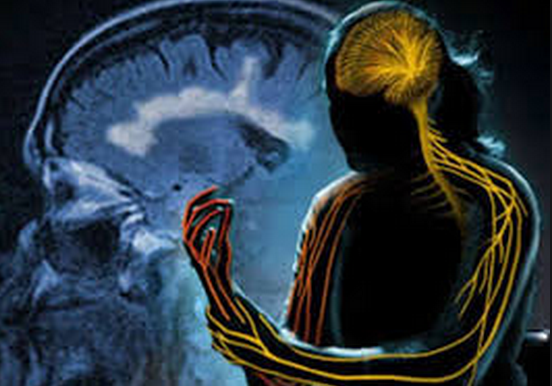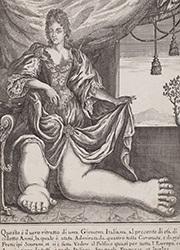Medical Marijuana and Its Effects on Spasticity
There are a limited number of scientific studies specifically related to the effect that marijuana has on spasticity in patients with MS. The following four studies, listed in chronological order from the most recent, illustrate the positive correlation found between medical marijuana and reduced spasticity in patients with MS.
Meinch, Schonle, and Conrad found that cannabinoids might have beneficial effects on spasticity (Meinch et al, 1989). They performed a case study of a 34 year old male diagnosed with MS. The patient suffered from ataxia and spastic tetraparesis. The goal of their research was to determine a relationship between smoking marijuana and levels of spasticity and ataxia in multiple sclerosis victims. The patient was hospitalized from 17 October to 25 October. On 22 October the patient was given one experimental marijuana cigarette. There were a number of different research methods implemented in this study. The researchers used quantitative clinical and electrophysiological assessments to determine the effects of the smoked marijuana. They repeated each evaluation five to ten times before and after the patient smoked the marijuana cigarette (Meinck et al., 1989).
The results indicated that smoking marijuana might have beneficial effects on both ataxia and spasticity. Before smoking, the patient could not walk, showed reflex patterns indicating spastic paresis, and experienced hand and finger tremors. Within two minutes of inhaling the cigarette, the severity of these disabilities declined. The patient was able to walk several feet, had alleviation from muscle spasms, and no longer experienced tremors in his fingers and hands (Meinch et al, 1989). The researchers encouraged further examinations and studies regarding the effects of medical marijuana. They concluded that the results of their experiment justify the need for continued research.
The second study examines the effect of Delta-9-THC on spasticity associated with MS (Ungerleider et al, 1988). This study was a double blind, placebo controlled, crossover clinical experiment of delta-9-THC in patients with clinical MS and spasticity. The researchers used 13 subjects, consisting of 5 males and 8 females. The patients ranged in age from 26-64 years and were divided into two groups depending on when they experienced their most severe spasticity. They received medications according to these times (one group received medications in the evenings before they went to bed and the second group received medication during the day and at night). The groups were assigned in paired double blind crossover trials. "Patients were given the drug orally for five consecutive days, were drug free for two subsequent days and then received a five day trial with the crossover drug" (Ungerleider et al., 1988). Patients were given appropriate amounts THC, depending on their responses to the drug. If spasticity was not effected and they experienced no side effects, the researchers increased in the following trial. The experimenters used a variety of research methods. They clinically assessed motor functions before, during, and after exposure to TCH. Motor functions included limb weakness, limb spasticity, limb coordination impairment, gait impairment, and reflexes. Each patient was also examined by neurologists before, during, and after they were administered TCH. The researchers also gave the patients questionnaires every morning. The patients rated their levels of spasticity and the side effects experienced while on the medicine (Ungerleider et al., 1988).
The results of this study indicated that the levels of spasticity reported by the patients decreased as the dose of THC increased. Furthermore, clinically assessed spasticity declined significantly when the patients received THC verses when they received a placebo. Although patients reported side effects from higher doses of THC, the results were not significant. The researchers suggested that further research should analyze specific and precise dosages for oral THC to minimize side effects. They also concluded that determining the addiction potential of oral THC should be a goal of future studies. The experimenters asserted that their positive findings imply a future role of THC in the treatment of spasticity in patients with MS (Ungerleider et al., 1988).
The third study, performed by Clifford in 1983, assessed the effects of THC for tremors associated with MS. Clifford�s goal was to validate the claims of a man who asserted that smoking marijuana reduced his spasticity from MS. Clifford examined 8 people who also suffered spasticity from MS. The patients included four men and four women, ranging in age from 21 to 49 years. Clifford videotaped each patient showing "the movement disorder at rest, speech, finger-nose-finger test, heel-knee-shin test, gait when possible, and when picking up a coin with either hand, using a spoon, using a pencil, handwriting a sample of his or her name, and drawing a spiral" (Clifford, 1983). He also performed a brief mental status examination. Finally, he recorded the psychological and physical effects as determined by the patient. Clifford administered a test dose of THC and increased the doses until unbearable side-effects were experienced or there was a therapeutic response. He used a single-blinded placebo to distinguish objective and subjective responses.
Two of the patients in this study experienced improved motor abilities after administration of THC. He described the effect of marijuana on one of these patients: "Tremor was maximal in the head and neck and resulted in particular problems eating, because it increased as efforts were made to put food in the mouth�[after ingesting THC] the patient�s ability to write was considerably improved and his use of eating utensils was markedly improved" (Clifford, 1983). Clifford suggested that further research was necessary to better understand the biological causes of tremors and the physiological effects of THC. He also, however, asserted that it is reasonable to research and consider THC when developing therapeutic remedies for spasticity associated with MS.
The fourth study, performed by Petro and Ellenberger in 1981, examines the effects of delta-9-THC on the treatment of human spasticity. Petro and Ellenberger analyzed nine patients with spasticity related to MS in a double-blind study. Each patient received ether a 5 or 10mg dose of oral THC or a placebo once a day on three different occasions. A blind examiner rated reflexes, resistance to stretching, and abnormal reflexes. The examiner also recorded levels of walking ability and the patient�s subjective responses to the medication and side effects (if present). Examinations occurred before and at 1�-hour intervals after administration of the "medicine" (Petro and Ellenberger, 1981).
The results of this experiment indicated a positive correlation between THC and the reduction of spasticity. Four patients experienced significant improvements in spasticity after administration of THC. None of the patients reported severe side effects. Petro and Ellenberger revolutionized scientific and medical thinking on the possibilities of marijuana as medicine for MS patients. The researchers noted that they "were not able to find previous studies of the effects of marijuana on spasticity in the medical literature" (Petro and Ellenberger, 1981). Based on their results, they concluded that THC should continue to be studied as a possible therapeutic treatment for spasticity.
Denver Medical Marijuana Exchange News,Products,Services for the Medical Marijuana Community Mobile
 Farewell, Mr. Zinsser
Farewell, Mr. Zinsser

















 Alexander Rauscher @rauscher11
Alexander Rauscher @rauscher11





